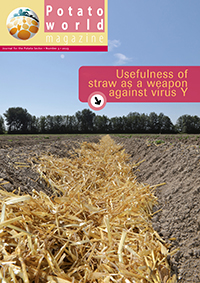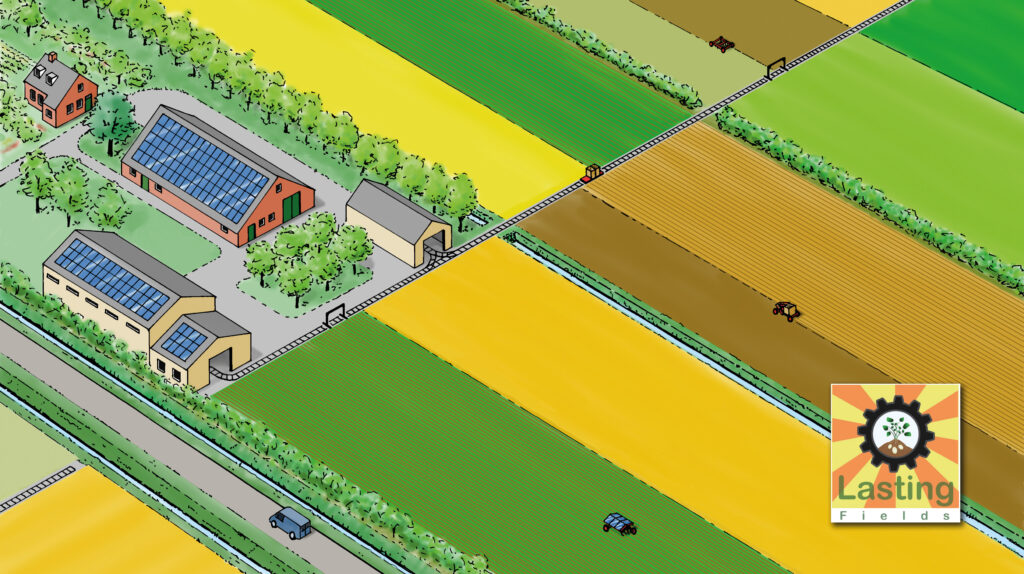Already a subscriber? Activate your premium account

Potatoworld Magazine

In North-Western Europe the potato Harvesting season is starting again. This is also the season of shows and demonstrations. In September there was Potato Europe in northern France, you have potato demonstration days in the Southwest of the Netherlands and Agro Techniek Holland in the center of the Netherlands.
An important feature of all these events is the harvest demonstration. Manufacturers of potato harvesters demonstrate their harvesters on demonstration fields. Over the last decades the machines demonstrated become bigger and bigger. At the moment harvesters with a total maximum weight of around 50 tons are on the market. The advantage of these harvesters is their large capacity and advanced techniques of handling and cleaning the product. With their big wheels or their caterpillar tracks they can be deployed under wet conditions and therefore ensure that the crop can be harvested.
The downside of these harvesters is the fact that they can be used in wetter conditions in combination with their weight. Although manufacturers do their best to reduce the pressure on the soil and to spread the pressure evenly, the bulky weight leads to a severe impact on the soil. The fact that they are used under wetter conditions makes that their impact is more severe than lighter harvesters that cannot harvest under these conditions.

In the past various studies in de field show the impact of harvest machines on the soil. e.g.(Arvidsson 2001)) Compaction of the soil up to 0.7 meters can be measured, depending on the weight of the machine and the harvest conditions. Eventually soil compaction leads to yield loss, reduced drainage and soil degradation. ((Arvidsson, Trautner et al. 2001)).
The question now is how to keep the advantage of large capacity, and ability to harvest potatoes in time on one side and on the other side keep a healthy soil. On short notice there is not a direct solution but use your brains and try to harvest under the best possible conditions and use lighter equipment. In the long term however there may be solutions using robotics, automation and autonomic vehicles to remain high harvesting capacity combined with low pressure on the soil. This is not as farfetched as you think.
Since a few years people already work on concepts in this field. One example of these concepts is lasting fields from 2013. (www.lastingfields.com). The idea behind this concept is to use fixed transportation paths on a farm and use small autonomous vehicles in the field. In this way the impact of mechanization on the soil is minimized and at the same time the capacity is ensured because autonomous vehicles work 24 hours 7 days a week to get the work done. In 2015 the first prototype of a small potato harvester was constructed to be used in the field (www.steverinktechniek.nl). At this moment trials are conducted to measure the impact on the soil. The harvester is not autonomous yet, but these techniques are already available and prototypes of autonomous sprayers and manure spreaders are already tested. These new techniques develop very fast and may be the next step in the future of sustainable potato production.
This concept will probably not the ultimate solution. However, thinking in another direction, out of the box and recognizing the possible value of new techniques and innovation will keep potato production sustainable and profitable. Important in this perspective is to think smarter, not bigger.
Dr. Ir. Peter Kooman
Professor Potato supply chain and sector innovation
CAH Vilentum University of Applied Sciences
p.kooman@cahvilentum.nl
Events
©2015 - 2024 Potatoworld | Webdesign and realisation COMMPRO